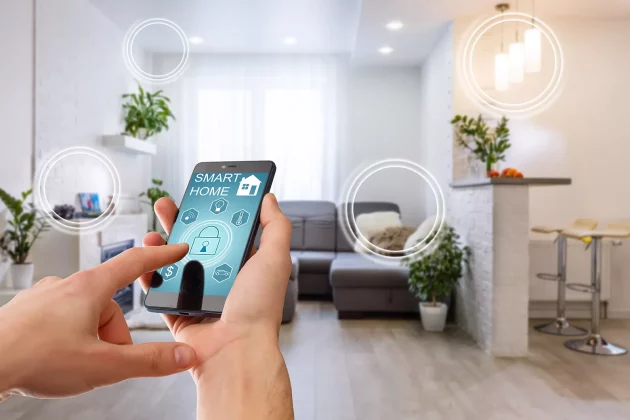Having a smart home is beneficial in many ways, allowing you to take greater control of your life, have more transparency into your habits, and even protect your property. But if you want fuller protection, you need to take extra measures to keep your smart home safe from cyber threats. You need a solid smart home cybersecurity strategy.

So how do you create one?
Why Smart Homes Are Vulnerable
Let’s start by exploring why smart homes are especially vulnerable to cyber threats.
- Reliance on external systems. For starters, relying on smart home technology means relying on a variety of different third parties. You might have devices from companies like Apple, Google, Amazon, and a variety of less popular, smaller startups, all in operation simultaneously. Many of these companies have an excellent historical track record when it comes to cybersecurity and protecting the security and privacy of their users. But all it takes is one slipup to cause a catastrophic disaster. If even one of your device or software vendors has a weakness to exploit, your smart home security could be jeopardized.
- Network accessibility. If your home is set up like most smart homes, all of your devices are connected to the same network. This is the same network used by your laptop, your phone, and your other personal devices. Hypothetically, if a maliciously motivated individual gains access to a single device on your network, they could gain access to the entire network, including devices that contain sensitive personal information.
- Multiple individual vulnerability points. Additionally, smart homes with many independent devices suffer from multiple individual vulnerability points. You may have excellent security practices when it comes to your laptop and your smartphone, but what about your refrigerator? All it takes is one weak link in the chain for a cybercriminal to gain access.
How to Keep Your Smart Home Safer
So what steps can you take to make your smart home safer?
- Do your due diligence when securing new devices or services. Before purchasing any new devices or services, do your due diligence. What do you know about the company offering this device or service? What is their history like? Have they suffered a data breach in the past, or have customers raised privacy or security concerns? What kind of reviews and testimonials can you find? What security standards are in place to make sure this device or service isn’t compromised?
- Secure your home network. This is a standard best practice even if you don’t have smart home technology in your living space: secure your home network. Simply adding a password to your home network and making sure that password is sufficiently long and complex can greatly increase your home security.
- Practice effective password management. Along similar lines, it’s important to practice effective password management, not just for your network, but for all your accounts. You should never use the same password for more than one account, and all your passwords should be unique, complex, and long, with many characters and many different types of characters. You should also never voluntarily give your password to another person.
- Utilize multifactor authentication. Multifactor authentication is a security option that requires multiple forms of identity verification before access to an account is granted. For example, in addition to entering your username and password, you may be prompted to validate your identity by entering a special code sent to your phone or email address. While this can be a bit annoying if you’re looking for faster entry, it increases your security significantly.
- Run automatic updates. Cybercriminals often gain access to devices and systems because of existing vulnerabilities. Software developers are quick to notice and patch such vulnerabilities, but these patches are only effective if you actually apply them. That’s why it’s important to turn automatic updates on and make sure all your devices and systems are up-to-date at all times.
- Segment your network. Consider segmenting your home network so you can have your smart home devices on a separate network than your personal devices. One way to do this is to set up a guest Wi-Fi network, which should only take a few minutes of your time.
- Watch for unusual activity. Use active monitoring to watch for any unusual activity. Do you notice a sudden drop in the performance of some of your devices? Is there a spike in traffic that doesn’t make any sense?
- Educate and train the other people in your household. Finally, make sure all the other members of your household are educated and ready to follow these best practices.
There’s no such thing as a perfectly secure smart home, because nothing in the digital world is ever perfectly secure. But you can greatly reduce your vulnerabilities to common types of smart home attacks with even a handful of simple strategies.














